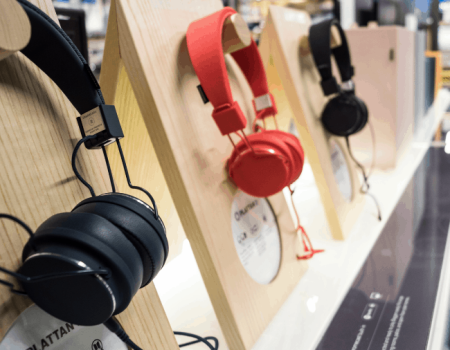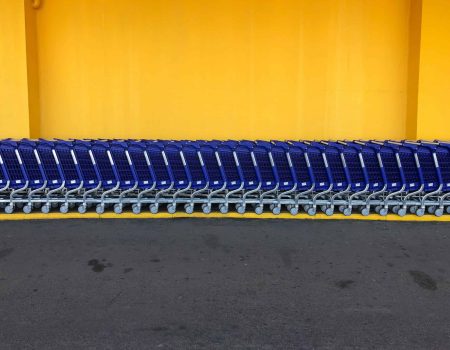Using quick delivery as a driver of growth
Delivery is an important part of the service phase
For a long time, I have had the desire to shed light on delivery as part of the service phase for omnichannel players. The reason is that too many merely focus on on-site, lead channels and physical sales channel, but forget the structural growth that can be achieved through a high level of service when delivering a product.
If customers’ needs are not met in terms of delivery capacity or speed, retailers lose direct revenue and they waste marketing money on attracting customers who do not intend to purchase anything. Inability to deliver (out of stock situations) also constitutes a significant source of impaired Customer Lifetime Value (CLV) – the customer is more likely to make a purchase elsewhere after shopping in vain both online as well as offline.
As Peter Hestbæk, Head of Digital Sales & Marketing at Matas, states so precisely in our interview with him:
What hinders the customer's purchase causes irritation and must be removed. Customers buy goods in physical stores because they cannot be bothered to wait, but it doesn't have to be this way.
There is a huge potential in offering quick delivery. If we just consider the instant buyers and adapt to their behavior, we can increase revenue significantly, but it requires retailers to improve their current delivery efforts. Today, 20-30% of all purchases are instant purchases, where customers have a desire to receive the product quickly.
But is quick delivery 1-2 business days? No, right?
they do it well
One company that is well on their way to meeting the needs of their customers is the digital pharmacy, Apopro. If you are already lying at home with the flu, a trip to the pharmacy is not very tempting. Therefore, Apopro offers customers the opportunity to have their medicine delivered at home the same day they order it. It requires customers to order before a specific time, but it is far better than waiting several days.
I know Apopro was born digital, but omnichannel players like Matas and Mads Nørgaard have also launched same day delivery.
SMARTER DELIVERY AS A COMPETETIVE PARAMETer
From my point of view, there are two significant benefits of faster delivery. It is both good in the fight against the big international players, and it can reduce inventory tie-ups significantly.
Peter Hestbæk knows from experience that quick delivery results in happier customers. And who does not want that?
Most people probably agree with me that we live in a global zapping-world, where customers chase the best prices and delivery without distinguishing between whether it is a Danish or foreign player. So, if you are only able to deliver product after a few business days, the instant buyers will already have put their money somewhere else.
Looking at competitors like Amazon, they prices and product range in the bag. But what they do not have is a Danish warehouse (yet). Danish retailers must take advantage of this.
how can goods be delivered more quickly?
Fast delivery is a critical focal point. But it also requires that Danish retailers start considering localised warehouses and localised delivery methods.
Who says it has to be the well-established package distributors who distribute your packages? Perhaps others might be able to do it faster?
Danish retailers need to strengthen their focus on how they can improve delivery, offer a more intelligent distribution of goods smarter, and deliver faster if they want to remain competitive. Here, physical stores constitute a unique asset that can deliver numerous products with a significant inventory.
REDUCE warehouse INVENTORY LEVELS
The other advantage is inventory levels. If retailers want to be able to deliver the products faster, it requires that they have the products in stock. And not necessarily just at their central warehouse. Omnichannel services such as in-store pickup, click-and-collect and drive up are all features that rely on one’s stock and simultaneously provide positives on the bottom line.
Same day delivery is a great opportunity to make the offline retail market online.
Just take a look at the American company, Target. They have increased their online sales by 31% in Q3 after implementing same day fulfillment in stores and have reduced the cost of handling online orders by up to 90%.
Target has renovated their stores and opened several small stores, both to make them the central point of their delivery, but also to be closer to the customers.
We should really consider this method to a greater extent at home.
Like Target, Danish retailers must start designing stores according to both online and offline demand, so that it becomes easier to handle online orders in the local stores. If they do this, they reduce tied up warehouse inventory because they do not end up with half a warehouse full of products that there is no demand for.
It is omnichannel at its best – the range is available and relevant both offline and online, and you can sell every product from every warehouse.
criticism of DANISH RETAILERS
It is a mystery to me why such a low number of Danish retailers have considered in-store fulfillment.
I know it is easier said than done. Danish stores may not have the inventory size to handle online orders. But if Danish retailers want to take up the fight against the big players, they must meet customers’ needs even better, and this requires them to look critically at their delivery and inventory management.
All too often, Danish retailers think short-term. The focus is on sales here and now, but if they do not remove their eyes from the sales figures, they forget to keep up with industry development, and then they can forget about growing sales figures in the long run.
So dear retailer – should we not once and for all start looking at delivery as a key role in omnichannel experiences?





